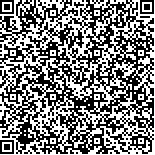本文已被:浏览 701次 下载 369次
投稿时间:2022-03-25 网络发布日期:2022-10-20
投稿时间:2022-03-25 网络发布日期:2022-10-20
中文摘要: 目的 评估睡眠和昼夜节律基因多态性及其联合作用与阻塞性睡眠呼吸暂停低通气综合征(OSAHS)的相关性。
方法 利用公共数据库和已有文献收集与睡眠和昼夜节律相关基因,采用生物信息学分析方法探讨候选基因参与OSAHS的潜在机制,并在新疆维吾尔自治区人民医院选取的50例重度OSAHS和50例非OSAHS患者中进行目标区域二代测序,筛选出OSAHS的易感位点,建立加权遗传风险评分(GRS),分析GRS与OSAHS的关联,探讨GRS与传统因素的交互作用对OSAHS的预测能力。
结果 本研究共纳入44个候选基因,进行生物信息学分析表明44个候选基因参与了睡眠与昼夜节律相关生物学过程和信号通路;对不同遗传模型下的变异进行logistic回归分析,调整了潜在的混杂因素后得到KSR2、NPAS2、OXTR、GHRL等4个基因与OSAHS仍有明显的相关性,对上述4个基因的6个位点(KSR2-rs2592290,rs1992750,rs66837180,NPAS2-rs2278727,OXTR-rs3806675,GHRL-rs10490816)进行GRS,结果显示,高GRS组人群比低GRS组人群有更高的OSAHS风险(OR=2.901,95%CI:1.288-6.534,P=0.010),此外将GRS 加入到OSAHS传统风险因素(年龄、性别及BMI)组成的回归模型后,其曲线下面积(AUC)值从0.877增加到0.902。
结论 KSR2、NPAS2、OXTR、GHR等睡眠与昼夜节律相关基因可能是OSAHS的遗传易感基因;基于上述4个基因的6个位点建立的GRS与传统因素的联合作用,更能提高OSAHS的预测效能。
Abstract:ObjectiveTo evaluate the associations of sleep, circadian rhythm gene polymorphisms and their combined effects with obstructive sleep apnea-hypopnea syndrome(OSAHS).
Methods The sleep and circadian rhythm-related genes were collected from public databases and existing literatures to explore the potential mechanism of candidate genes participating in OSAHS by bioinformatics analysis. Fifty cases of severe OSAHS and 50 cases of non-OSAHS were selected from the Xinjiang Uygur Municipal Peoples Hospital for second-generation sequencing of the target region to screen out the susceptibility loci of OSAHS, and establish a weighted genetic risk score(GRS) to analyze its correlation with OSAHS. The predictive effect of interaction between GRS and traditional factors on OSAHS was analyzed.
Results Bioinformatics analysis indicated that 44 candidate genes were involved in biological processes and signal pathways related to sleep and circadian rhythm. Logistic regression analysis was carried out for the variation under different genetic models. After adjusting for potential confounding factors, it was found that KSR2, NPAS2, OXTR and GHRL genes were significantly correlated with OSAHS. Six loci〖JP2〗(KSR2-rs2592290, rs1992750, rs66837180, NPAS2-rs22787727, OXTR-rs3806675 and GHRL-rs10490816) of the four genes were analyzed using GRS. The high GRS group had a higher risk of OSAHS than the low GRS group(OR=2.901, 95%CI: 1.288-6.534, P=0.010). After adding GRS to the regression model composed of traditional risk factors(age, sex and BMI) of OSAHS, the area under the curve(AUC) value increased from 0.877 to 0.902.
Conclusion The sleep and circadian rhythm-related genes such as KSR2,NPAS2, OXTR and GHRL may be the genetic susceptibility genes for OSAHS. The combination of GRS established based on the six loci of the four genes and traditional factors could improve the prediction model of OSAHS.
keywords: Sleep apnea hypopnea syndrome, obstructive Bioinformatics Genetic risk score Risk assessment Gene polymorphism Circadian rhythm
文章编号: 中图分类号:R56 文献标志码:A
基金项目:新疆维吾尔自治区自然科学基金项目(2021D01C173)
附件
引用文本:
木叶斯尔·木合塔尔,朱晴,曹媛媛,等.睡眠和昼夜节律基因及其累积效应与阻塞性睡眠呼吸暂停低通气综合征的相关性[J].中国临床研究,2022,35(10):1349-1355.
木叶斯尔·木合塔尔,朱晴,曹媛媛,等.睡眠和昼夜节律基因及其累积效应与阻塞性睡眠呼吸暂停低通气综合征的相关性[J].中国临床研究,2022,35(10):1349-1355.
